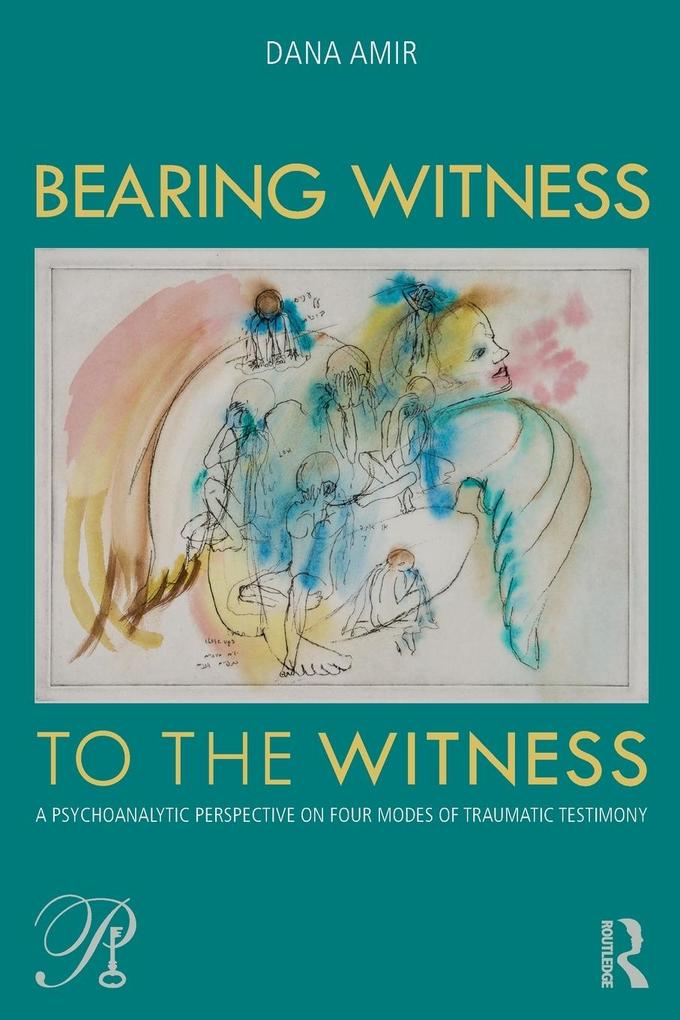
Zustellung: Fr, 04.07. - Mi, 09.07.
Versand in 2 Wochen
VersandkostenfreiBestellen & in Filiale abholen:
Bearing Witness to the Witness examines the different methods of testimony given by trauma victims and the ways in which these can enrich or undermine the ability of the reader to witness them. In doing so, the author demonstrates the importance of testimony in understanding the nature of trauma, and therefore how to respond to trauma more generally in a clinical psychoanalytic setting.
Inhaltsverzeichnis
Foreword by Dori Laub
Introduction
1. When Language Meets the Traumatic Lacuna: Four modes of Traumatic Testimony
2. Autobiographical Fiction or Fictional Autobiography? Georges Perec's W, or the Memory of Childhood
3. The Post-Traumatic Dyad: Agota Kristof's The Notebook
4. The Center Mode as Opposed to the Marginal Mode: Yehiel Dinur (Ka-Tzetnick)'s House of Dolls
5. Transcending the Traumatic Real: Six Variations in Six Stories by Ida Fink
6. The Traumatic Lacuna as the Negative Possession of the Other: Aharon Appelfeld's "Bertha"
7. From the Collapse of Signifiers to the Reconstruction of Language: Robert Antelme's The Human Race
8. The Lacuna: Reading Children's Testimonies
9. Modes of Memory, Modes of Healing
10. Awakening the Narrator: Clinical Work with Modes of Testimony
11. Epilogue: Hiroshima Mon Amour and the Command of Boundary Violation
Introduction
1. When Language Meets the Traumatic Lacuna: Four modes of Traumatic Testimony
2. Autobiographical Fiction or Fictional Autobiography? Georges Perec's W, or the Memory of Childhood
3. The Post-Traumatic Dyad: Agota Kristof's The Notebook
4. The Center Mode as Opposed to the Marginal Mode: Yehiel Dinur (Ka-Tzetnick)'s House of Dolls
5. Transcending the Traumatic Real: Six Variations in Six Stories by Ida Fink
6. The Traumatic Lacuna as the Negative Possession of the Other: Aharon Appelfeld's "Bertha"
7. From the Collapse of Signifiers to the Reconstruction of Language: Robert Antelme's The Human Race
8. The Lacuna: Reading Children's Testimonies
9. Modes of Memory, Modes of Healing
10. Awakening the Narrator: Clinical Work with Modes of Testimony
11. Epilogue: Hiroshima Mon Amour and the Command of Boundary Violation
Produktdetails
Erscheinungsdatum
18. September 2018
Sprache
englisch
Seitenanzahl
170
Autor/Autorin
Dana Amir
Verlag/Hersteller
Produktart
kartoniert
Gewicht
272 g
Größe (L/B/H)
231/152/15 mm
ISBN
9781138505308
Entdecken Sie mehr
Bewertungen
0 Bewertungen
Es wurden noch keine Bewertungen abgegeben. Schreiben Sie die erste Bewertung zu "Bearing Witness to the Witness" und helfen Sie damit anderen bei der Kaufentscheidung.










